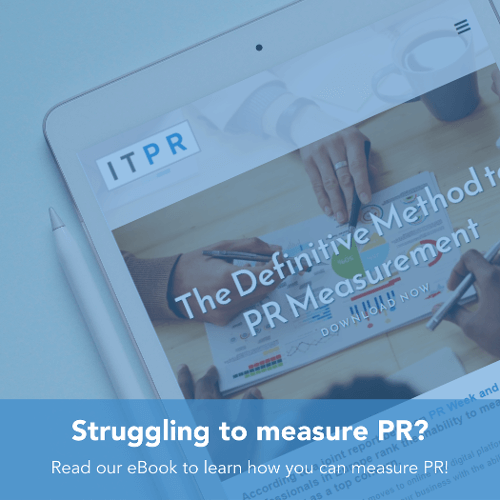Measurement, evaluation, and data has typically been the Achilles heel of the PR industry. For years, public relations professionals, marketing managers, and the C-suite have been trying to justify why they have spent their PR budget with an agency which, while accumulating a healthy amount of coverage, has failed to prove what all this media attention has actually done for the business.
One of the reasons effective PR reporting is so difficult is because we have simply lacked the data to drive the effectiveness of campaigns. To this day there is no industry reporting standard, with agencies often relying on vanity metrics such as Advertising Value Equivalency (AVE) and estimated audience reach. There is a confusing array of metrics which agencies use to try and justify what they do.
Another reason so many PR agencies struggle on measurement is because the things they consider to be important are irrelevant to directors and senior executives who want to see tangible results. Measuring media impressions for example is one thing many PR agencies still focus on, but this has a number of flaws:
- One – No matter how widely read the newspaper, magazine or website is, not every reader is going to read or even see the article your business appears in – let alone see your business’ name in the article.
- Two – There is no guarantee that the people who read the article are your target audience in the first place.
Other agencies focus purely on the number of clippings gained during a campaign. Seeing your name flashed across a newspaper article or on TV news might be a big boost to your ego but, again, what is that doing for your business’ bottom line?
Data-driven PR measurement
Modern Digital PR measurement is data-driven, using analytics and metrics from tools such as Google Analytics, Moz, and Ahrefs to show exactly how your PR activity has impacted your audience and helped your business, but also helps to inform future activity and potential changes to your wider content marketing activities.
As a marketing manager, if you really want to impress your boss with the results of a data-driven PR campaign, these are the key topics you should be referencing:
- Increases in web traffic: Digital PR revolves around getting more traffic to your website by gaining earned media coverage in target online media with links to your company within the article. A successful Digital PR strategy should result in a boost in your company’s web traffic.
- Inbound links: Similar to increases in web traffic, getting valuable links from authoritative websites (whether this is trade, national and even regional websites or well-known blogs) will boost your own site’s SEO and get you higher up the Google rankings and make you more likely to be found by prospects.
- Referral traffic: How much of your web traffic is coming from earned media links or your organic or paid social media efforts? Traditional PR agencies have no way of telling you this important information. But using website analytics and SEO tools you can tell exactly where your new web traffic is coming from and inform your future Digital PR and content marketing efforts.
With data-driven PR, paid media, and advertising campaigns you can also help promote coverage to a wider audience.
For example, you could consider creating a sponsored post on LinkedIn which links to the coverage. The benefit of this is that you can specifically target a group of people that the coverage may not have initially reached, but who you think might be interested in reading it, such as an article on GDPR aimed at marketing managers and CEOs at advertising companies.
Even if you’ve already earned your coverage and amplified it through your owned media channels, it’s always useful to explore paid options to see if there might be even more value that can be squeezed from the coverage.
Digging into the data
Effective Digital PR reporting is all about data. A successful Digital PR agency should be able to take your website analytics and measure goal conversions and how many web visitors – brought to a website through inbound links – have been turned into qualified leads or customers.
Combining Digital PR measurement alongside your wider content marketing reports you will be able to prove full ROI of your PR activity by tying outcomes of activity to website performance.
To be truly beneficial, PR measurement needs to be aligned with your wider marketing and sales activity, ensuring everyone is on the same page and working towards the same goals.
The days when Digital PR agencies could fluff their campaign results and marketing managers could blag some budget for activities which proved no value are long gone.
The future of PR is data-driven, and agencies need to become more digitally minded if they want to survive.
If you’re looking to develop your SEO and Digital PR work, you can find out more about our B2B content creation or B2B technology PR consultancy services or get in touch with one of our team.
Tags: Digital PR, PR measurement





.png?width=60&name=twitter-logo%20(1).png)
